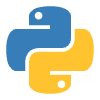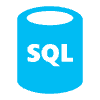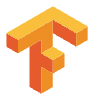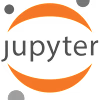Freelancer Data Scientist Selection Criteria: Defining Must-Have Skills

Freelancer Data Scientist Selection Criteria: Defining Must-Have Skills
Why Teams Need Clear Selection Standards
5 Must-Have Technical Skills
1. Master Python or R
2. Use SQL for Data Management
3. Apply Data Cleaning Techniques
4. Build Machine Learning Models
5. Understand Statistics
3 Must-Have Soft Skills
1. Communicate Clearly
2. Align With Client Goals
3. Manage Projects Confidently
Building a Freelancer Profile That Stands Out
1. Showcase a Versatile Portfolio
2. Gather Client Testimonials
How Contra Helps Freelancers Thrive
1. Offer Competitive Rates
FAQs About Hiring a Freelance Data Scientist
What are the most common misconceptions about freelance data scientists?
How do I verify a freelancer’s technical competence?
Can freelance data scientists handle large-scale projects?
When should I hire a full-time data scientist instead?
Key Points to Remember
Freelancer Data Scientist Selection Criteria: Defining Must-Have Skills
Why Teams Need Clear Selection Standards
5 Must-Have Technical Skills
1. Master Python or R
pandas for manipulation, NumPy for numerical operations, scikit-learn for modeling, and matplotlib or seaborn for visualization.ggplot2, caret, and dplyr are common. Clients with legacy systems or industry-specific workflows may request it.ggplot code that was crashing their Shiny app… not glamorous, but it paid."2. Use SQL for Data Management
3. Apply Data Cleaning Techniques
"A third of my time on one project was spent just fixing someone else's Excel exports."
pandas in Python or tidyverse in R. Feature engineering often happens in parallel—such as extracting time-based features or converting categorical variables.4. Build Machine Learning Models
TensorFlow or PyTorch is useful—especially in image classification, NLP, or time series forecasting. Model evaluation (e.g., AUC, F1-score, confusion matrix) is usually part of the deliverable.5. Understand Statistics
"Explaining a p-value to a client without using the word 'significance' is harder than writing the code that generated it."
3 Must-Have Soft Skills
1. Communicate Clearly
“If you can’t explain a confusion matrix to a marketing lead without using the phrase ‘true negative,’ you’re not ready for client work.”
2. Align With Client Goals
3. Manage Projects Confidently
“The client doesn't need to know how long your hyperparameter tuning took—they just want to know if the report’s still coming Friday.”
Building a Freelancer Profile That Stands Out
1. Showcase a Versatile Portfolio
“If your notebook needs five minutes of explanation in a call, it probably needs three more lines of markdown.”
2. Gather Client Testimonials
“The best testimonial I ever got was from a client I thought barely noticed my work. Turns out they just hated meetings.”
How Contra Helps Freelancers Thrive
“It’s just the freelancer and the client—no middleman skimming off the top.”
1. Offer Competitive Rates
“On Contra, I don’t have to calculate backwards from my rate to guess what I’ll actually take home.”
FAQs About Hiring a Freelance Data Scientist
What are the most common misconceptions about freelance data scientists?
"Freelancer ≠ Junior. Some of the most senior engineers I’ve worked with have been contractors by choice."
How do I verify a freelancer’s technical competence?
Can freelance data scientists handle large-scale projects?
“It’s not about the size of the dataset—it’s how well they plan their pipeline.”
When should I hire a full-time data scientist instead?
Key Points to Remember
pandas for data cleaning, scikit-learn for modeling, or ggplot2 for visualization. SQL remains non-negotiable for relational data work. Experience designing efficient joins or writing optimized queries is frequently more valuable than general database familiarity.“If your most impressive skill can’t be explained in a single paragraph to a non-technical client, it’s probably not your strongest value-add.”
Posted Apr 14, 2025
Freelancer Data Scientist Selection Criteria: Defining Must-Have Skills for 2025 hiring success, from Python and SQL to communication and project delivery.











